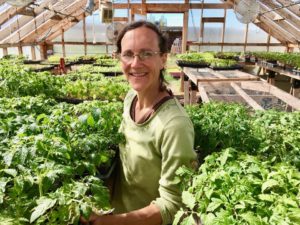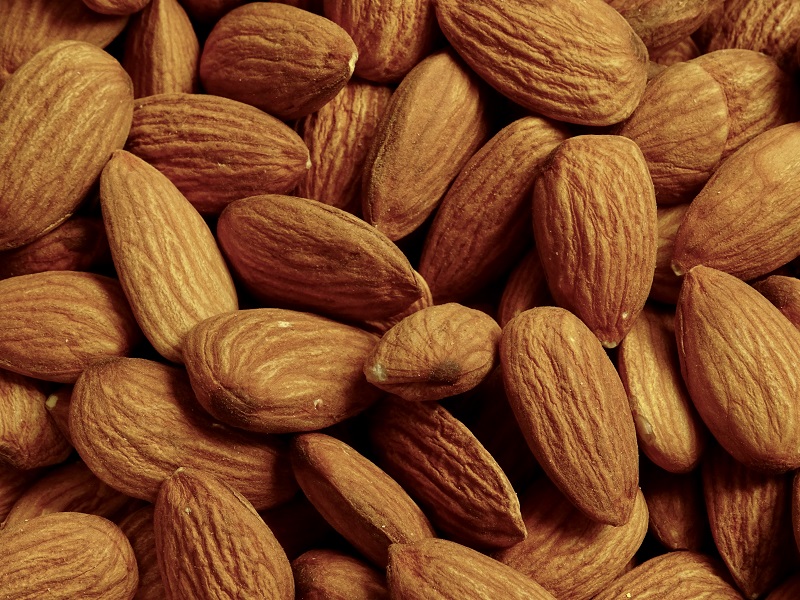Is Protected Ag Right for You?

High tunnels has extended when Bozeman-MT-based Three Hearts Farm can offer produce, says Rachael Hicks.

Producing vegetables undercover is nothing new. It has been going on for centuries. But more recently there has been a surge in new and established vegetable producers adding greenhouses, high tunnels, and low tunnels to their operations.
Just take a look at USDA data where we can see a meteoric increase in food crops grown under cover. In 1998, USDA showed 1,015 operations had protected agriculture, accounting for $223 million in sales. In 2009, that number inched up to 1,476, but sales more than doubled to $553 million.
Then a mere five years later, the number of operations shot up to 2,521 and sales jumped to $797 million. In about 15 years, the number of operations multiplied 2.5 times, and sales tripled to more three-quarters of a billion dollars.
The 2017 Ag Census is due to publish this year, and will give us even better insight.
Is it time for you to add high tunnels or greenhouses to your operation? Here are a few things you need to consider:
1. You Want to Extend Your Season Either Earlier, Later, or Both
Growing undercover allows you to grow in cooler weather, and that means there’s less competition for your crop in the market. It also means higher prices for your produce than you can get during the normal growing season.
There are nuances to that concept, however.
“It’s a global marketplace,” says Judson Reid, Extension Vegetable Specialist at Cornell University. “What you grow is probably available in the marketplace from another part of the world in the winter months. How will you compete with that? What is your competitive advantage over the existing supply chain?”
One obvious selling point is that you’re a local grower. Or, if you are an organic grower, offering a green option in winter will make you more appealing.
Then there’s the puzzle of market access.
“If you grow greens in the winter, is there a market for that produce? Do you have access to it?” Reid asks.
A good place to research your market is to talk to your distributor, grocery buyers, or farm markets. Winter farmers’ markets have been growing in popularity, and you can talk to your local market managers to see which crops are needed most.
“Growing in what I call controlled environment agriculture can give you a competitive advantage,” says Merle Jensen Professor Emeritus, University of Arizona. “When you can offer local produce out of season, and it’s grown well and tasty, then you can be paid very well for that.”
2. You’d Like to Grow Crops Not Normally Offered in Your Region
Each region has limits on what it can grow due to the local climate.
“By using the high tunnels, we are able to provide greens late in the season; cucumbers and basil early, as well as tomatoes and peppers — two crops that are difficult to grow in our climate,” says Rachael Hicks of Three Hearts Farm in Bozeman, MT.
Local Appetite Growers in Fairhope, AL, located on the Gulf Coast just west of the Florida panhandle, adopted high tunnels a couple of years ago in an effort to protect their high-value lettuce and cherry tomato crops from the heavy storms and rain they experience on a regular basis. The controlled environment provided by the high tunnels has made a huge difference to the quality of their products, say owners Will Mastin and Karl Brantley.
3. You’ll Face Different Diseases and Pests
To the uninitiated, protected ag seems to offer a safe haven from pest and disease pressure.
You have better control over how much water plants get in high tunnels, which helps keep disease at bay. That said, greenhouses, high tunnels, and low tunnels are good at retaining moisture, and can be humid without good ventilation —ideal conditions for disease.
Diseases like downy and powdery mildew and other diseases related to moisture on the leaf can be a problem with winter-grown greens. Producers need to be on the lookout, and act quickly as this can rapidly get out of control.
With all growing systems, sanitation is important for disease control; but with hydroponics, where there is recycling of nutrient solutions, it is critical. Waterborne plant pathogenic organisms — Pythium species in particular — can be devastating in such a production system.
Many of the insects that are a problem under field conditions are rarely experienced in high tunnels or hydroponics. However, production under these conditions doesn’t guarantee a pest-free situation.
“We had problems with aphids when we grew spinach in high tunnels, so we moved to raising it with no heat and have eliminated this pest,” says Allan Gandelman, owner of Main Street Farms in Homer, NY.
If you grow undercover, you can plan on managing spider mites, other mites, and thrips, Reid says.
“Talk with local Extension agents about which ones are the main ones to worry about in your area,” he says.
There is a clear pest and disease advantage in a controlled environment.
“We can use biological controls to good effect,” he says.
Beneficial insects, for example, are likely to stick around. And re-entry times on biopesticides are much shorter than conventional treatments.
Another pest area protected ag offers relief is with wildlife. Deer, birds, and rabbits are successfully kept from plants, by and large. Rodents, however, can still be a problem, as anyone with a warehouse can attest.
4. You Can Offer Your Crews Work for a Longer Period
Outside of some warm weather regions, production is highly seasonal. That makes it difficult to hold on to labor from year to year. Crews come in for three months and need to move on to other farms for the rest of the year. They may or may not be available to return the following spring when you need them again.
“A lot of people doing this will report that they are able to keep people, better able to hire when full season comes on,” Reid says.
But be sure to consider that you’ll be extending your own work season as well.
“With growing year-round with the high tunnels, we just don’t get a break like we did when we grew in the field,” Gandelman says.
5. You Have Unproductive Areas You’d Like to Use
For someone starting out with little to no land suitable for production, using high tunnels or hydroponics could be ideal.
“We started at Main Street Farms with no land and were doing aquaponics. So growing microgreens hydroponically fitted perfected,” Gandelman says.
As the business has evolved, the hydroponics are now a small part of Main Street Farms’ operation, and they are expanding more into high tunnel production.
6. Run the Numbers to Ensure It’s a Profitable Venture
Generally speaking, field-grown produce is the most cost-effective way to grow, Reid says.
Since crops grown under cover often bring higher prices than field grown, revenue will be higher. But so are the costs associated with it.
Talk with knowledgeable people (like Extension agents) to get a good sense of what the input and labor costs per square foot will be, and compare that with your records for field-grown crops. Will the high prices for produce bring in a profit?
The math works out for Three Hearts Farms, which has about a quarter acre of high tunnels. The high-tunnel production has greatly increased profitability on the farm, Hicks says.
Also consider the type of protected growing you will do. Low tunnels do not require an investment in lighting, heat, or other environmental controls. High tunnels have a wider range of sophistication and can have many of the environmental features of a greenhouse.
Greenhouses are the most technologically advanced type of growing, but are ideal for hydroponics, which is highly efficient in the space used and inputs needed.
When running the numbers, Reid recommends analyzing a full year to gain a realistic idea of costs and profits.
“Look at it annually. Say you’re growing spinach in the winter time. That budget will look very different, because of the price compared to summer,” Reid says.
How to Get Started
Committing to protected agriculture doesn’t have to be an enormous investment, Judson Reid, Extension Vegetable Specialist, Cornell University, says.
The costs between establishing low tunnels, high tunnels, and greenhouses are significant. Low tunnels are the cheapest investment, with greenhouses — complete with climate control— at the top of the list.
“Before investing in high tunnels, go with low tunnels. You can you grow a 75-day-maturity crop multiple times. If that goes well, then think about high tunnels, then greenhouses,” Reid says.









